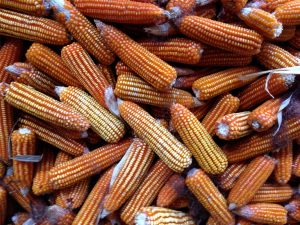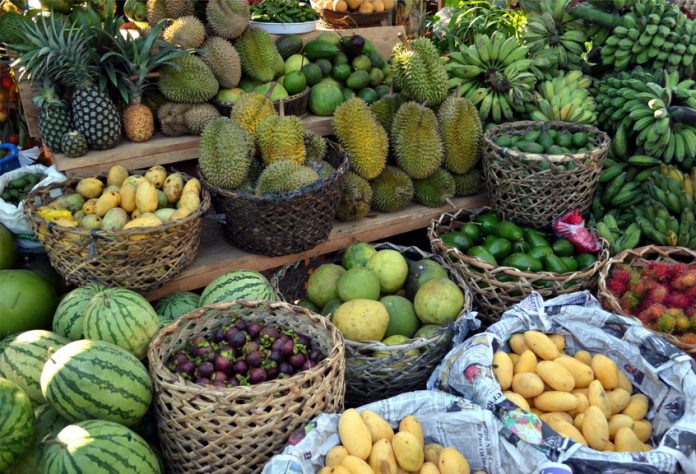Developing countries can benefit from genetically-modified crops by being able to increase food production, lower production cost and food prices, improve food quality and preserve the environment.” – Biotechnology Information Center of Southeast Asia Research Center for Agriculture
“There was a big difference,” said Edwin Y. Paraluman on his corn harvests from the 8-hectare farm in Lagao, General Santos City.
When he was planting the traditional corn in the past, he harvested only 4.5 tons per hectare. But when he started planting biotech corn in 2003, his harvest increased to 7 tons.
“I was listening to the lecture of scientists regarding biotech corn at the city hall. There were pros and cons. But I believed that biotech corn is good and so when it was finally commercialized, I immediately planted it in my farm.”
Paraluman bought biotech corn from a company. He used one sack of seeds (costing now P4,800 per sack) to plant a hectare. The cost of traditional corn is P2,400 per sack.
“Although the biotech corn seeds is a little bit expensive, I managed to get a good harvest – almost twice the traditional corn. In addition, I also gained more since I stopped using pesticides to fight against corn borer. The labor cost was also minimized.”
Corn borer is the crop’s ultimate nemesis in Asia as it can cause devastating losses in a corn field. In the Philippines, losses of 20-80% have been reported.
When asked about what he can say about those who opposed about planting biotech crops, he replied: “I am my own evidence. I have been planting biotech corn for thirteen years now. My farm income has considerably increased. Although biotech corn is for livestock, I also eat biotech corn since I like eating corn. I am still alive so I don’t think so that biotech corn is unhealthy.”
In 2003, less than 50,000 hectares of Bt corn were planted all over the country. By 2014, the hectare went up to around 700,000, or about 54% of the total 1.3 million hectares planted to corn. Last year, more than 800,000 hectares were planted to Bt corn.
The increase signified farmer and market acceptance, according to Dr. Vivencio R. Mamaril, director of the Philippine Agriculture and Fisheries Biotechnology Program of the Department of Agriculture. “The mere fact that planting area grew to 800,000 hectares is proof that it is a successful crop and farmers believed in it,” he pointed out.
Bt corn is a variant of corn that has been genetically altered to express one or more proteins from the bacterium Bacillus thuringiensis (Bt). Bt, which has been found in Philippine soils, was discovered to have an insecticidal property in 1901. By the 1950s, Bt became a well-known biological insecticide.
The increased income is one of the reasons why more Filipino farmers are now planting biotech corn. A report from a survey conducted by the International Service for the Acquisition of Agri-biotech Applications (ISAAA) among biotech corn farmers in Pampanga, Iloilo and South Cotabato showed net income of P22,550 per hectare (two times higher than what they used to earn in using non-biotech corn varieties) among lowland farmers.
Among upland farmers, whose total farm expense is lower due to the absence of tillage, the reported earning is as much as three times their previous earnings: P33,630.
Lesser expense is another factor for adoption. “Since the biotech corn varieties ensure no borer pest attack, the use of costly pesticides has been practically eliminated,” said the report.
Aquino Gozun, a biotech corn farmer from Lacmit, Arayat in Pampanga, shared his experience: “I started to plant Bt corn in 2004. I initially saw the big difference between Bt corn and conventional corn. The pests always eat the conventional corn that’s why I sometimes end up with no earning at all. When Bt corn was introduced to us, it brought good results to farmers as we no longer need to apply insecticide and we even have more yield.”
Heavy labor is also minimized. “When I started to plant Bt corn, I felt more relaxed because there is less labor in planting Bt corn unlike with conventional corn where you still need to till the land. It also reduces my time for corn farming and I can spend more time with my other crops,” Faustino Astrero, Jr., a biotech corn farmer from Banga, South Cotabato, admitted.
Most of the farmers who planted biotech corn have considerably increased their standard of living. “We started to plant Bt corn in 2003 and we are still planting it up to now,” said Indalencio Supan, a biotech corn farmer from Balicutan, Magalang in Pampanga. “Because of planting Bt corn, we were able to buy a house and lot, farm machineries and even farm land.”
 So far, Bt corn is the only biotech crop planted in the Philippines. In the near future, other biotech crops may also be grown. Current research and development efforts on biotech or genetically modified crops include products from the public sector, particularly fruit and shoot borer resistant Bt eggplant, biotech papaya with delayed ripening and papaya ring spot virus resistance, which the Institute of Plant Breeding of the University of the Philippines at Los Baños have developed.
So far, Bt corn is the only biotech crop planted in the Philippines. In the near future, other biotech crops may also be grown. Current research and development efforts on biotech or genetically modified crops include products from the public sector, particularly fruit and shoot borer resistant Bt eggplant, biotech papaya with delayed ripening and papaya ring spot virus resistance, which the Institute of Plant Breeding of the University of the Philippines at Los Baños have developed.
The other two biotech products also in development stage are Bt cotton (developed by the Philippine Fiber Development Authority and golden rice (developed by the Philippine Rice Research Institute and the International Rice Research Institute). Golden rice is a biotech rice biofortified with provitamin A beta-carotene.
Biotechnology is seen a probably solution to the looming food crisis. “All possible tools that can help promote sustainable agriculture for food security must be marshalled,” suggested Ismail Serageldin when he was still the vice-president of World Bank, “and biotechnology, safely developed, could be a tremendous help.”
“As citizens of this country, I think it is our duty to help spread the truth about things that have the potential to make cheap and safe food available to our people and to inform them of things that endanger their health and welfare,” said former Senator Aquilino “Nene” Pimentel Jr. said during the opening of the 12th National Biotech Week at the Bureau of Soils and Water Management last year.
“I think it is time that we make full use of the advances of biotechnology – where applicable – and use it to help free our people from hunger – and from ignorance – so that they in turn may not only be receivers, but sharers of the wealth of the nation with those in dire need of it,” the former senator from Mindanao pointed out.
But the question is: are biotech crops safe to eat?
The 2010 report of the European Commission Directorate-General for Research and Innovation on GMOs (genetically modified organisms) noted: “The main conclusion to be drawn from the efforts of more than 130 research projects, covering a period of more than 25 years of research, and involving more than 500 independent research groups, is that biotechnology, and in particular GMOs, are not per se more risky than conventional plant breeding technologies.”
If GMOs are safe to eat, why should there be a mandatory labelling for GMOs, which is under deliberation among Filipino lawmakers? “The bill is based on the assumption that GMOs are inherently unsafe,” wrote Dr. Eufemio T. Rasco in a statement posted in his social media. “This assumption, though repeatedly stated by anti-GMO advocates, is not supported by scientific evidence.”
The proposed mandatory label – “This product contains GMO” – aims to warn the public of the dangers of GMOs, according to Dr. Rasco, one of the country’s biotech experts and an academician of the National Academy of Science and Technology.
But “if we go by scientific evidence, the label is unnecessary,” he pointed out. “The danger from GMO or any product (non-GMO) for that matter, is a function of the composition of the final product, as well as in the manner of the product’s intended use. If the proponents of the bill really want to warn the public, a more meaningful label may be: ‘This product contains an allergen’ – if the product (whether or not produced by modern biotechnology) has been shown to be allergenic.”
Dr. Rasco said that instead of informing the public, the proposed label will mislead. “Consumers who are not informed of the safety of GMOs will think that the product is hazardous, because of the persistent misinformation by anti-GMO activists.”
Biotechnology has been with us since time immemorial. The making of beer, soy sauce, nata de coco and even composting all undergo biotechnological process. Other products of biotechnology include antibiotics (penicillin), insulin (used in treating diabetes), and those vaccines used for measles, hepatitis B and rabies.
Those were products of traditional biotechnology. The era of modern biotechnology brought the technology into a higher level.
“Modern biotechnology narrowly refers to biotechnology applications based on the new science of molecular biology,” explained Dr. Emil Q. Javier, former science secretary. “With the new knowledge in molecular sciences, it is now possible to identify specific genes, understand their function in the whole organisms; clone, move and transfer gene across natural species barriers; and make the genes express their products in specific tissues at specific growth stages in the specific organisms.”







